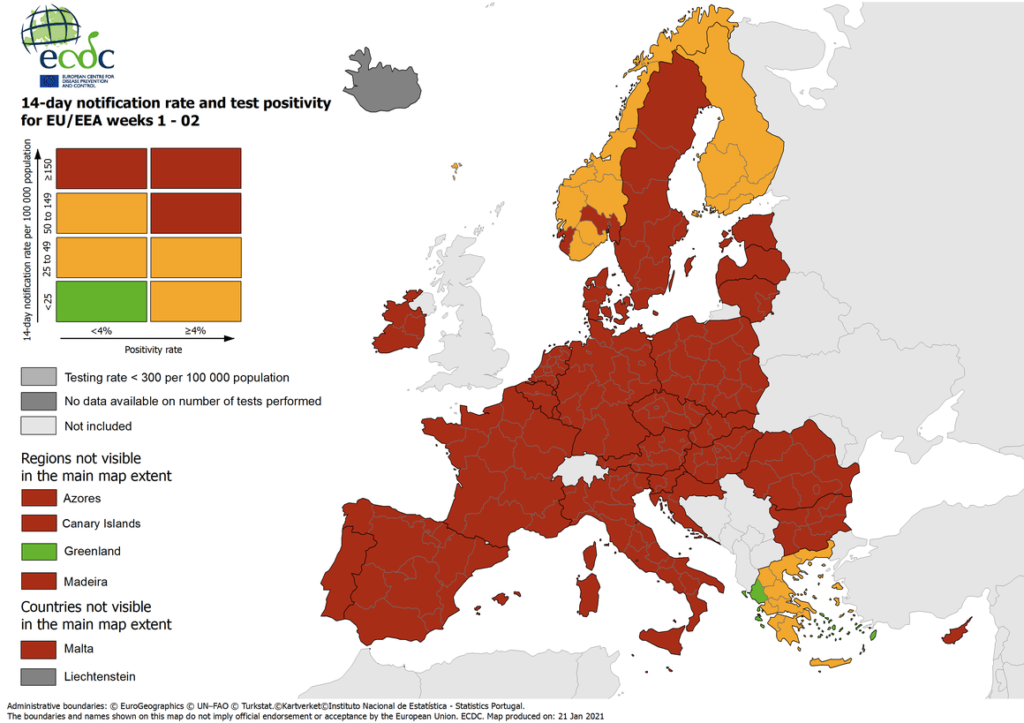The European Union has developed a stop light system for marking their member nations’ numbers for covid-19. A quick look at the map can tell you which parts of the EU are seeing lower virus numbers than others. With the numbers climbing in some areas, the EU has proposed a new “dark red” zone. Here is what this means.
EU Proposes New “Dark Red” Zone

From the ECDC – the current coronavirus map as of January 21
Every Thursday, the ECDC (European Centre for Disease Prevention and Control) releases a color-coded map to show what the coronavirus situation presently looks like in the European Union. Here is what the various colors mean:
Areas are marked in the following colours:
- green if the 14-day notification rate is lower than 25 cases per 100 000 and the test positivity rate below 4%;
- orange if the 14-day notification rate is lower than 50 cases per 100 000 but the test positivity rate is 4% or higher or, if the 14-day notification rate is between 25 and 150 cases per 100 000 and the test positivity rate is below 4%;
- red if the 14-day notification rate is 50 cases per 100 000 or higher and the test positivity rate is 4% or higher or if the 14-day notification rate is higher than 150 cases per 100 000;
- grey if there is insufficient information or if the testing rate is lower than 300 cases per 100 000.
At present, the worst color was the red to indicate that the virus is at a rate of 50 cases per 100K or higher and that the test positivity rate is 4% or higher. This happens over a 14 day notification period.
Greece has the Only “Green” Zones
For the last couple of updates, Greece has remained the only green zone on the map (the regions of Epirus and the Ionian, Cyclades and Dodecanese islands), which gives hope to the people that are wanting to visit Greece in the 2021 summer.
However, Greece had been under a strict lockdown with fines of €300 for going out without possessing the right paper and reason to be out as well as almost every establishment being closed. This is in addition to a 9PM curfew. This week, Greece began to reopen their retail sector so it will be interesting to see how the testing data looks after two weeks of this reopening.
What a “Dark Red” Zone Would Mean
But, what the European Commission has proposed this week is for a new zone, a dark red zone to be added to the map. This would indicate that the virus is going around at a much higher rate. Should this new zone be adopted by the Commission, it could mean that following measures would be taken for travelers from the dark red zone:
- Persons travelling from dark red areas could be required to do a test before departure
- They would also have to undergo quarantine after arrival – this is within the European Union.
- All non-essential travel should be strongly discouraged both within the country and of course across borders.
This may likely be in response to some nation’s fears of the virus spreading more rapidly from those traveling throughout the continent. Germany has said that, if other nations do not do similar to Germany in their handling of the virus, that they would look at measures such as entry restrictions – including from other EU countries. Germany has already mandated a new mask rule that medical masks will be required in stores and all public transportation – including on all flights to/from Germany as of February 1.








